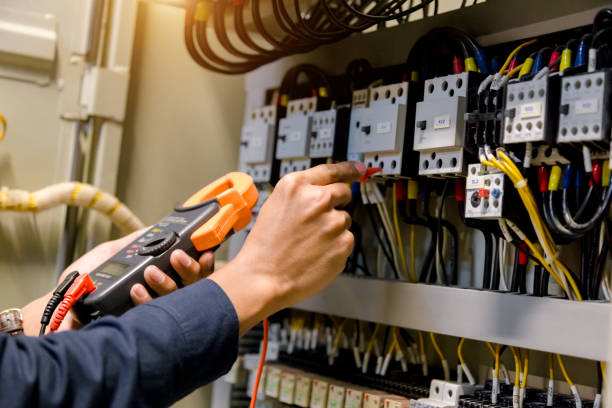Selecting the right transformer for your electrical needs is crucial for ensuring the safety and efficiency of your electrical systems. Whether you’re setting up a new office space, upgrading your home electrical system, or working on a major industrial project, getting the right transformer can make a significant difference. Let’s dive into the essentials you need to know to make an informed choice from the various transformers for sale.
Contents
Understanding the Basics: What is a Transformer?
Transformers are the unsung heroes of the electrical world. They step up (increase) or step down (decrease) the voltage levels to meet the needs of different electrical devices. Think of them as the backstage crew in a theater production – you don’t see them, but without them, the show wouldn’t go on.
Why Choosing the Right Transformer Matters
Picking the wrong transformer can lead to inefficient energy use, increased costs, and even potential safety hazards. Imagine trying to water a delicate flower with a fire hose – not the best idea, right? Similarly, the right transformer ensures your devices get the correct voltage, protecting them from damage and enhancing their longevity.
Types of Transformers
Let’s break down the different types of transformers you might encounter:
Step-Up Transformers
These are used when you need to increase the voltage. Commonly found in power plants, they help in transmitting electricity over long distances.
Step-Down Transformers
These reduce the voltage levels and are used in homes and offices to ensure that the appliances receive safe, usable electricity.
Isolation Transformers
These provide electrical isolation between two circuits, ensuring safety by preventing any direct electrical connection.
Autotransformers
A single winding transformer that can either step up or step down voltage with higher efficiency and compact size.
Key Factors to Consider
1. Voltage Requirements
Understand the voltage requirements of your electrical devices. For instance, most household appliances in the US operate on 120V, while industrial equipment may require much higher voltages.
2. Power Rating
Transformers come with different power ratings (measured in kVA). Ensure the transformer you choose can handle the power requirements of your devices. Overloading a transformer can lead to overheating and failure.
3. Frequency
In the US, the standard frequency is 60 Hz. Ensure the transformer matches the frequency of your power supply to avoid compatibility issues.
4. Efficiency
Higher efficiency transformers may cost more upfront but save money in the long run through reduced energy losses.
5. Cooling Method
Transformers can be air-cooled or oil-cooled. Air-cooled transformers are easier to maintain, while oil-cooled ones are more efficient but require regular maintenance.
6. Safety Features
Look for transformers with built-in safety features such as overload protection, temperature control, and insulation.
Quick Checklist for Selecting a Transformer
- Determine voltage requirements
- Check power rating (kVA)
- Verify frequency compatibility
- Assess efficiency
- Decide on cooling method
- Look for safety features
Practical Tips for Selection
1. Understand Your Load
Before purchasing, calculate the total load that will be connected to the transformer. This includes all devices and appliances that will draw power simultaneously.
2. Future-Proof Your Investment
Consider future expansions. If you plan to add more devices or equipment, it’s wise to choose a transformer with a slightly higher power rating to accommodate future growth.
3. Consult with Experts
When in doubt, consult with an electrical engineer or a professional. Their expertise can guide you in making the best choice and ensure compliance with local regulations.
Common Mistakes to Avoid
1. Ignoring the Environment
Environmental conditions such as temperature, humidity, and dust can impact transformer performance. Ensure the transformer you choose is suitable for the operating environment.
2. Skimping on Quality
Cheaper transformers might save money upfront but can lead to higher maintenance costs and reduced lifespan. Invest in a quality transformer from a reputable manufacturer.
3. Not Considering Efficiency
Ignoring transformer efficiency can lead to higher energy bills. Opt for high-efficiency models even if they come at a premium.
The Final Word: Make an Informed Decision
Selecting the right transformer is not just about finding a device that works; it’s about ensuring safety, efficiency, and long-term reliability. By understanding your needs, considering key factors, and avoiding common pitfalls, you can make a choice that will serve you well for years to come.
Resources for Further Reading
- National Electrical Manufacturers Association (NEMA) – A great resource for standards and guidelines.
- IEEE Standards Association – Offers detailed standards on various types of transformers.
- Local Electrical Codes and Regulations – Always check your local requirements to ensure compliance.
Conclusion
Transformers might not be the most glamorous part of your electrical setup, but they are certainly one of the most important. By taking the time to understand your needs and doing a bit of research, you can choose a transformer that will provide reliable, efficient service. Remember, the right transformer will not only power your devices but also protect them, saving you time, money, and hassle in the long run.



